Gifts and stockings, and desserts and treats, and Santa and snow, and so much more. Wishes coming true and hope in the air. Love and laughter and everything good. Christmas is on it’s way.
It’s almost time to prepare the Christmas Dinner and start getting the Christmas pudding ready. It’s such a warm time of the year with lovely Christmas traditions and all the family and friends gathering for pre-Christmas meals and post-Christmas lunch.
So many different dishes to celebrate Christmas in different homes across the globe. I love finding out the similarities and differences in Christmas food and traditions.
What do people prepare for Xmas dinner in their part of the world? And what different Christmas sweets do different cultures make? So here are my friends’ answers to what people eat for Christmas dinner and dessert in different parts of the world.
1. Puto Bumbong in the Philippines
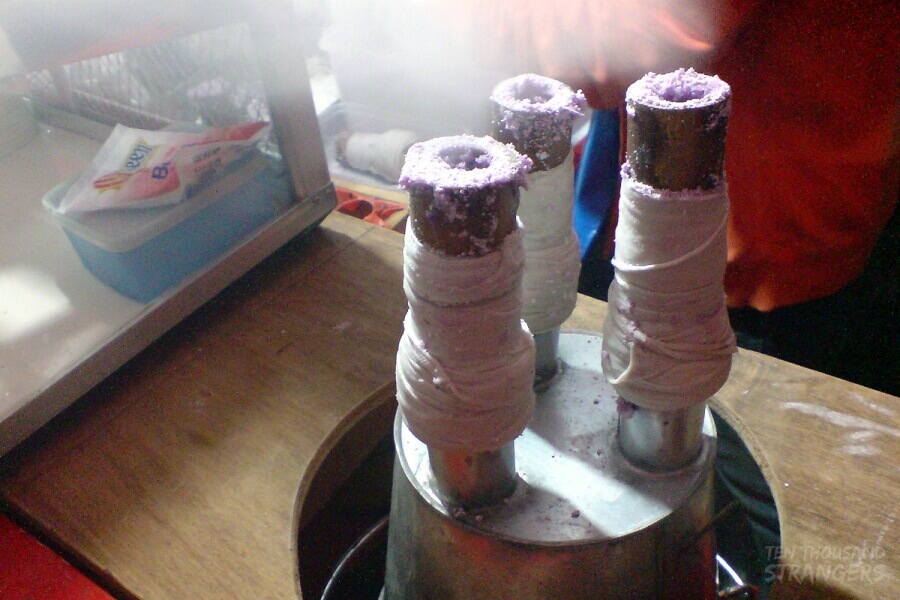
Pic by Noel from Ten Thousand Strangers
Puto Bumbong (steamed cylindrical cake) is a purple rice cake with a distinct cylindrical shape as it is steam-cooked in bamboo molds. Main ingredients include white and purple glutinous rice and served with sweetened grated coconut.
This traditional Christmas food from the Philippines is often associated with the nine-day dawn masses (Simbang Gabi) as it traditionally starts appearing in street stalls at the dawn of December 16.
However, since the Philippines is known for having the longest Christmas Season in the world, this traditional Christmas food can already be seen being sold as early as September.
Puto Bumbong is sweet and is usually paired with bibingka (coal-baked rice cake) and a cup of hot salabat (ginger tea).
By Noel from Ten Thousand Strangers. Catch up with Noel on Facebook at Ten Thousand Strangers.
2. Lefse in Norway
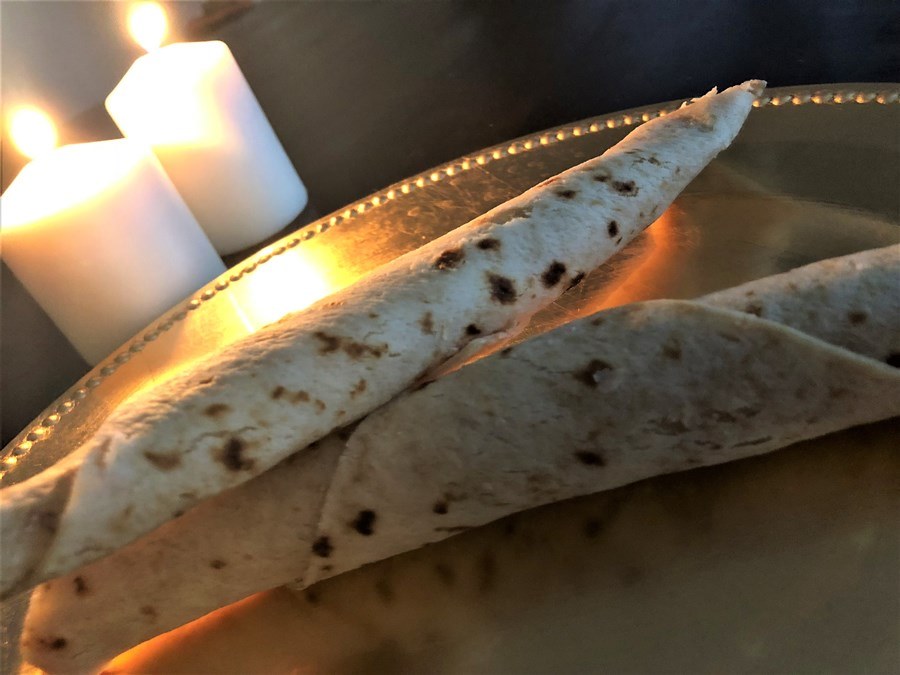
Pic by Kristin from Sippin Gypsy
Lefse is popular Scandinavian dish prepared most often from potatoes. At the holidays my Grandma and Grandpa, like many Norwegians, upheld tradition of preparing Tynnlefse or ‘Thin Lefse’ together as a family.
It is an all-day event to make the dough of riced potatoes, butter, salt and flour and roll it paper thin and place it onto a special griddle. Long wooden rods are used to move the dough.
Lefse can be served many ways, but one of the most popular and a favorite way my family enjoys Lefse is to smother the thin flatbread with butter and sprinkle generously with cinnamon and sugar then roll it up.
By Kristin from Sippin Gypsy. Catch up with Kristin on Facebook at Sipping Gypsy.
3. Lebkuchen in Germany
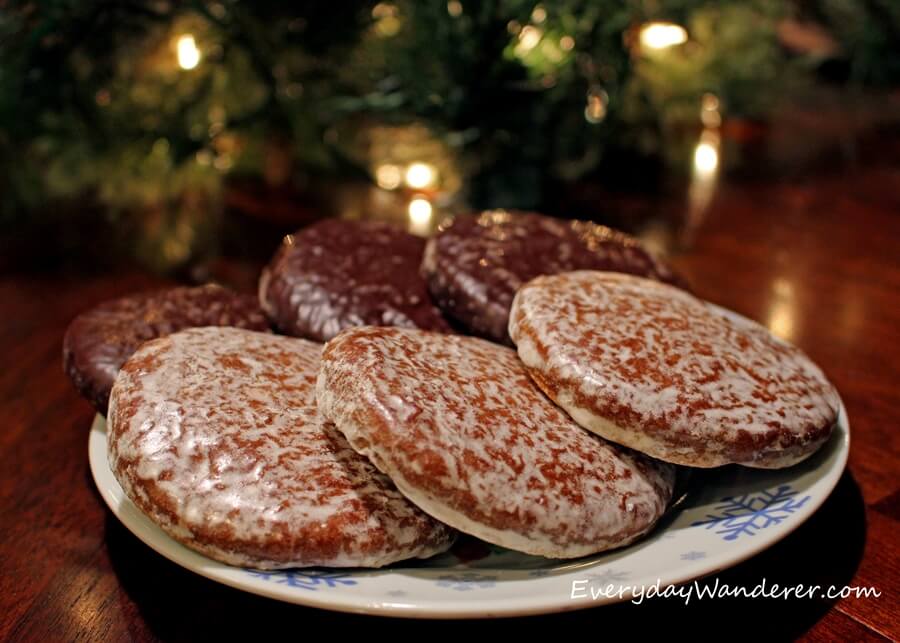
Pic by Sage from Everyday Wanderer
If a gingerbread man and a slice of spice cake had a baby, it would be named lebkuchen. Although kuchen means cake in German, this Christmas treat is more like a sweet and spicy cookie.
Lebkuchen is made by piling cake-like dough on a white, edible wafer, baking it, and then dipping the creation in a clear sugar or dark chocolate glaze.
Called oblaten, the white wafter that forms the foundation of these German Christmas cookies always remind me of Communion at Christmas Eve Mass.
As it turns out, that’s because the 13th Century German monks who invented lebkuchen in Nuremberg, Germany, used larger versions of unconsecrated hosts to keep the spiced dough from sticking to the baking sheet.
The cake batter ranges from sweet (also known as Honigkuchen or honey cake) to spicy (also known as Pfefferkuchen or pepper cake). It is typically made of some combination of these ingredients:
honey or molasses,
spices (like cinnamon, cloves, nutmeg, and ginger),
nuts (like chopped hazelnuts or sliced almonds), and
candied fruit (like candied lemon peel).
In the country that began the tradition of decorating a Christmas tree as was the setting for the Nutcracker Ballet, no Christmas would be complete without sweet and spicy lebkuchen!
By Sage from Everyday Wanderer. Catch up with Sage on Facebook at Everyday Wanderer.
4. Pavlova in Australia and New Zealand
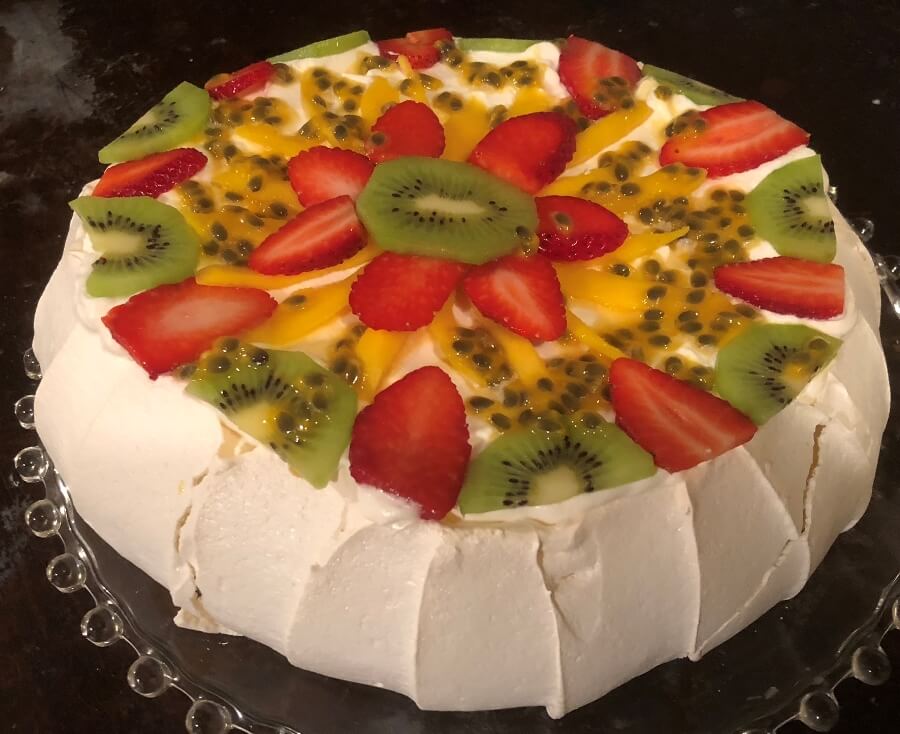
Pic by James from Travel Collecting
Pavlova is a common dish used to celebrate Christmas in Australia and New Zealand. Christmas is in the middle of summer in the southern hemisphere and it is hard to eat heavy puddings and hot roast when it is 30 degrees Celsius outside.
Pavlova, a delicious meringue dessert, is perfectly suited to the hot summer weather. Both Australia and New Zealand claim that the pavlova was first created in their country (for the famous ballerina Anna Pavlova’s visit), and no one knows for sure, but this is a common Christmas dessert in both countries.
It is made of sugar, egg whites and air – a light, fluffy, soft meringue inside and a crispy meringue shell on the outside. This is then covered in lashings of whipped cream and decorated with tropical fruit.
At Christmas, kiwi fruits, strawberries and passion fruit make the perfect green, red and gold colors of Christmas.
By James from Travel Collecting. Catch up with James on Facebook at Travel Collecting.
5. Lechon in Cuba
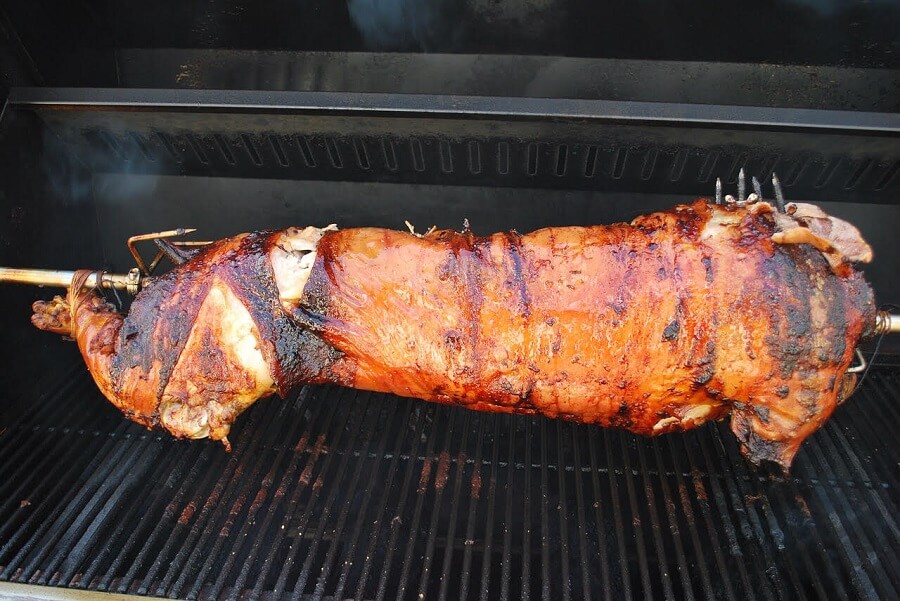
Pic by Talek from Travels With Talek
The traditional Christmas meal in Cuba is celebrated on December 24 and is called “Noche Buena” or “Good Night.” Once you have a nochebuena meal it will be hard to forget it. The family gets together early in the day and the cooking starts.
First up is the lechon, roast pig – or a piece of it depending on how large the family is. This mail dish is accompanied by rice and black beans served separately or, if mixed, it is called more.
Other tasty little sides are fried plantains and yuca con mojo, a starchy, white tuber seasoned with oil and garlic. After-dinner treats include dates and almond nougat all washed down with smooth Cuban rum or fine Spanish wine. What a delicious tradition!
By Talek from Travels With Talek. Catch up with Talek on Facebook at Travels With Talek.
6. Chocolate Ripple Cake in Australia
Is it even Christmas without a slab of chocolate ripple cake and a wedge of pavlova on your plate? Well in Australia probably not.
Chocolate ripple cake is one of those odd, strangely Australian desserts that are brought out for special events and more prominently at Christmas.
Each family will have their own version, but the basic ingredients of a chocolate ripple cake is whipped cream (cream, vanilla essence and sugar.
Not that stuff that comes from a can) squishing together Arnott’s Choc Ripple biscuits. Now it’s important that you only use the choc ripple biscuits.
You can make your choc-ripple cake into a log, a Christmas wreath (my personal favourite) or into any odd shape you want. You layer the cream and biscuits at a one:one ratio. Once you’ve used up the biscuits you layer the cream on top, wrap in foil and let it sit in the fridge overnight.
Now the reason I’ve given you the very quick how-to is to show you how this dessert is the quintessential Australian treat. It’s a laid-back and affordable dessert that no matter where you come from you can easily recreate. It’s a dish that many Grandmothers made and brings back fond memories no matter what time of year it is made.
By Jean from Traveling Honeybird. Catch up with Jean on Facebook at Traveling Honeybird.
7. Sarmale in Romania
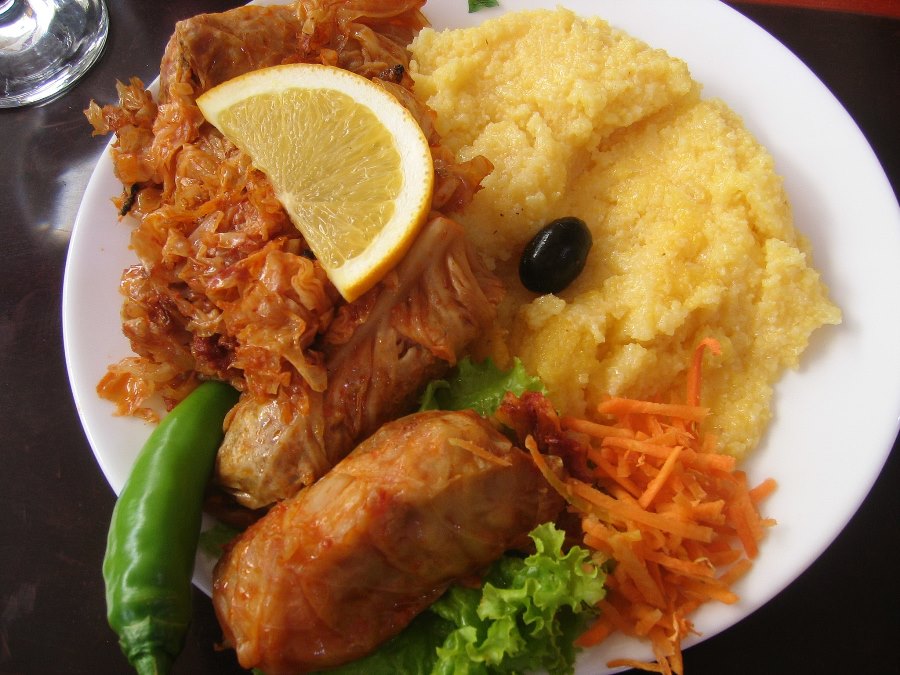
Pic by The Mighty Quill from Wikimedia CC By SA
Sarmale is the most popular Romanian traditional dish for Christmas. The name, and the dish as well, have a Turkish influence since the Ottoman Empire ruled this territory.
As a matter of fact, one can find sarmale or sarma in various forms and sizes in the whole Balkan region. Sarmale are small rolls made with pickled cabbage or vines leaves and then stuffed with a delicious mixture of pork meat and rice.
They have to be boiled very well in order to be tasty. Sarmale can be served as the main dish, usually with a side dish of boiled polenta.
By Iuliana from Authentic Travels. Catch up with Iuliana on Facebook at Authentic Travels.
8. Fruit Trifle in Australia
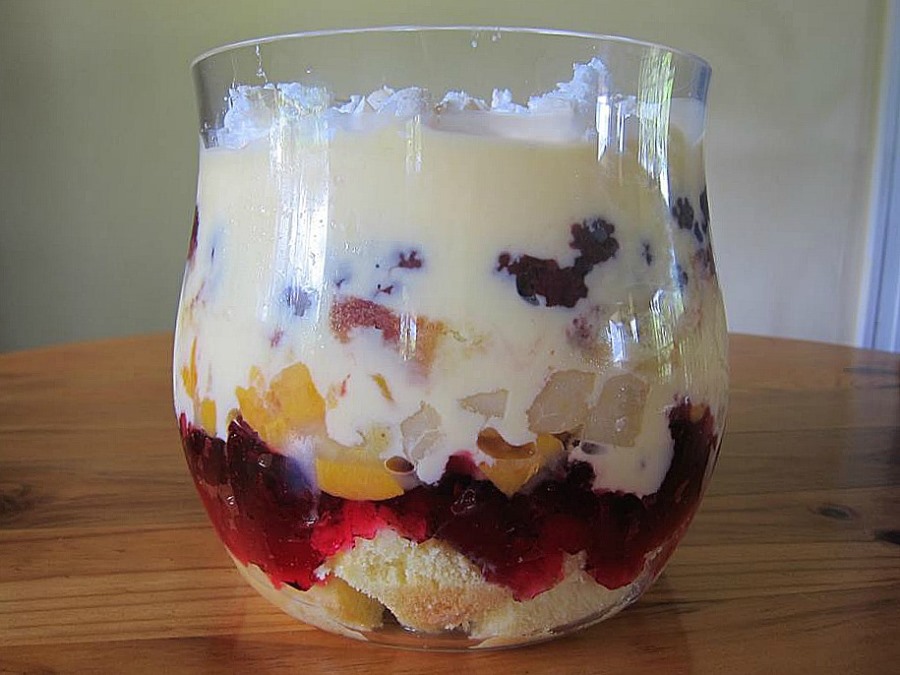
Pic by Jan from Budget Travel Talk
Australia is a multi-cultural country. White settlement began with convicts from England and there was originally a huge English influence in Australian food and culture. In North Queensland, the weather is hot and humid at Christmas time so the traditional (English) hot Plum Pudding is shunned for the refreshingly cold and decidedly more tropical fruit Trifle.
Layers of tropical fruits, fruit jelly, egg custard, sponge cake (soaked with sherry) are topped with lashings of fresh cream. It will without a doubt be served with scoops of freezing cold ice-cream.
Best eaten under the shade of a tree, at the beach or pool-side.
By Jan from Budget Travel Talk. Catch up with Jan on Facebook at Budget Travel Talk.
9. Bourbon Balls in Southeastern USA
Bourbon Balls are a traditional Christmas time treat in the southeastern United States. These delectable delicacies were invented by Ruth Hanley Booe of Kentucky’s Rebecca Ruth Candy in 1938, and became increasingly popular in the years leading up to World War II.
Found in The Joy of Cooking, the classic recipe is remarkably simple, using just five ingredients– bourbon, dark cocoa, sugar, vanilla wafers, and light corn syrup. I started making my own version nearly 20 years ago, adding pecans, orange zest, and Splenda (as a means to lower the sugar) to taste.
You can also add coconut, sprinkles, or any other coating you can imagine. Just thinking about them brings back fond memories of spending Christmas with my late grandmother, who loved my version, and of giving my wife Mary a batch less than 3 weeks after we met.
This year we’ll celebrate 10 years together, with making Bourbon Balls as a family one of our most beloved Christmas traditions.
By Bret from Green Global Travel. Catch up with Iuliana on Facebook at Green Global Travel.
Related Post
10. Mince Pies in Britain
Ever since I was a kid, mince pies have been one of my favourite parts about Christmas. Sure, presents are great, but honestly, which English person doesn’t love mince pies!? Every year, mum bakes up a hundred or so, and the family gets to work devouring them over the course of about 3 days.
Mince pies are a traditional British food, and their origins date back to some time in the 1200s (apparently). Sure you can eat them at any time of year, however, it is only really at Christmas time that most shops will start stocking them. Just writing about mince pies makes me long for December to roll around!
By Bradley from Dream Big, Travel Far. Catch up with Bradley on Facebook at Dream Big, Travel Far.
11. Barszcz – Polish Christmas Soup in Eastern Europe
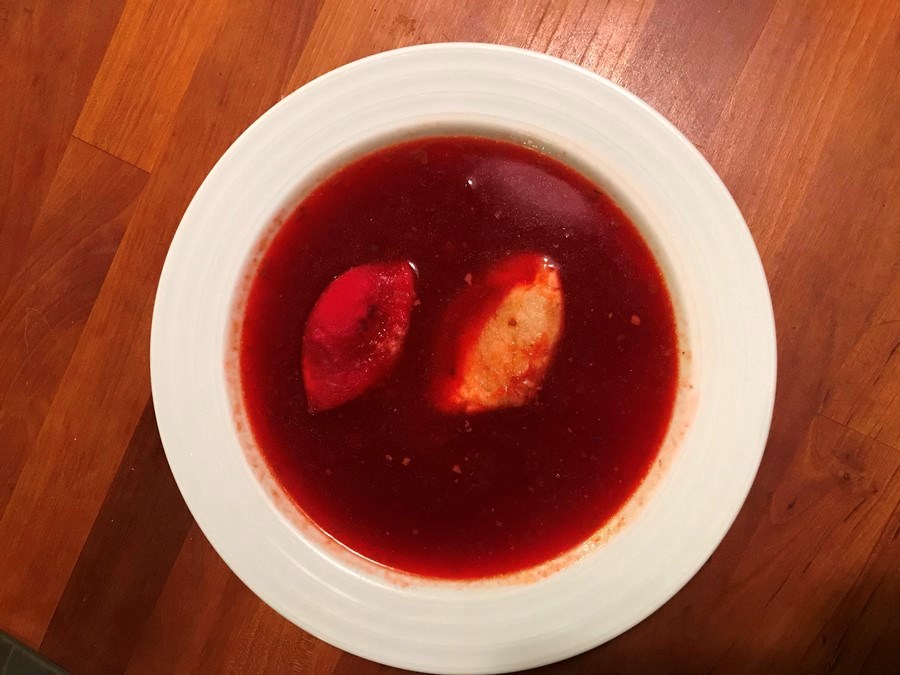
Pic by Shelley from Niche Travel Design
Polish barszcz (pronounced barsht) is a red beet soup traditionally served as the first course of the 12 course, meatless, Christmas Eve celebration called Wigilia (vee gee lee a) or The Vigil.
I never ate beets until I married a Polish American and adopted the Christmas Eve tradition of Wigilia. And, if I am being honest, I don’t like beets. They taste like dirt too often, but I actually like this soup. This soup is good. It is a light broth, heavy on flavor, and really easy to make. I got this recipe from my mother in law who hails from Olendy, Poland.
There are many version of barszcz. They can be made with chunks of beets or a more smoothed out soup made after cooking and pureeing the beets. And, Christmas barszcz has a little Polish surprise – uszki or dumplings. Who doesn’t love dumplings??
Babcia’s Barszcz Recipe
1. Peel raw beets (2-3) and cut into small pieces.
2. Cover beets with 4-5 cups of vegetable broth (as the meal is vegetarian) and cook.
3. Boil until the beets are soft
4. Add 1 TBSP salt and 1/4 cup of vinegar
5. When beets are soft, puree with hand mixer
6. Add mushroom or sauerkraut uszki which means ears in Polish
7. Serve and enjoy
Optional – add sour cream.
Merry Christmas everyone!
Wesołych Świąt wszystkim!
By Niche Travel Design. Catch up with Niche Travel on Facebook at Niche Travel Design.
12. Moulded Marzipan by the East Indians in India

Pic by Sarah from TheWingedFork
Growing up, the house started smelling of Christmas from late November. Literally! You could smell marzipan, vanilla cream, thali sweet, cordial, Christmas cake and so much more.
The best part of being East Indian though, was tasting the smells. Or rather eating the Christmas sweets that weren’t good enough to give to relatives and were handed over to us children. 😉
One of my favourites was marzipan. Not the stirring for hours to make it, but the part where we mould it into these tiny colourful shapes – flowers, fruits, stars, and more. The moulded marzipan is left out to dry before being sorted into parcels for friends and family.
By Abby from Abby’s Plate Follow Abby on Pinterest@AbbysPlate
13. Nyama Choma in Kenya
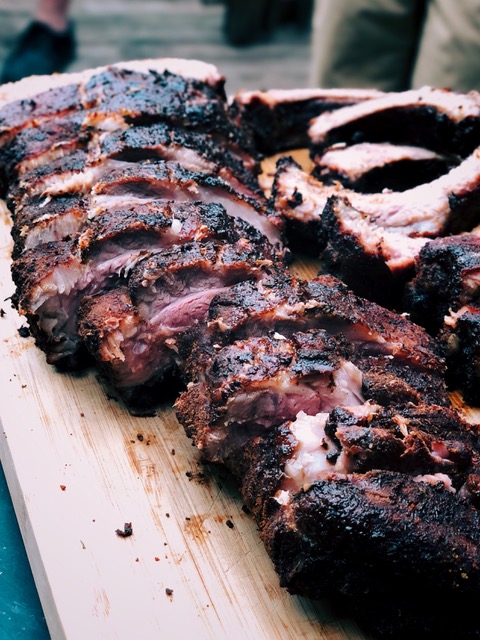
Pic by Nadine from The Expat Mummy
Christmas in Kenya comes in the middle of the long hot summer and the country erupts into one big party. Tradition calls for Nyamo Choma, roughly translated as Burned Meat it is essentially BBQ.
Families and friends will gather together to celebrate the holidays by butchering an animal and roasting it over hot coals. Usually goat is the meat of choice, but Nyama Choma can be beef, lamb or chicken.
The barbequed meat is served on a platter and accompanied by a huge range from dishes. From mashed sweet potatoes, Ugali (maize meal), Pliau (spicy rice), Githeri (corn and beans) and Sukuma Wiki (collard greens).
There are 42 different tribes in Kenya and each tribe will have a special signature African dish that they will cook for their Christmas meal. In addition, people will brew their own beer and drink to the celebration.
By Nadine from The Expat Mummy. Follow Nadine on Facebook at The Expat Mummy.
14. Weihnachtsplätzchen from Germany

Pic by Lena from The Social Travel Experiment
One of my favorite childhood memories were the times I would bake Christmas Cookies, in German they are called Weihnachtsplätzchen, with my mom before Christmas.
There must be hundreds maybe thousands of different kinds of Christmas cookies in Germany, but we would typically bake about 4 to 6 different types.
Even now that I am an adult and living in Japan, I love the tradition of baking Christmas cookies, so in the weeks leading up to Christmas, I bake different kinds of cookies, which I give to my co-workers as little Christmas presents. Of course, the biggest portion of cookies I eat all by myself. Who could blame me, right?
My favorite kinds are Butterplätzchen, butter cookies, in different shapes and sizes, or jam filled cookies called Hildaplätzchen. There are delicious star-shaped cinnamon cookies and of course Vanillekipferl, small crescent shaped biscuits made with almonds and dusted with vanilla sugar.
On cold afternoons in Germany before Christmas there is nothing better than sitting together with the family in the comfortable living room, drinking some hot tea or coffee and enjoying the delicious Weihnachtsplätzchen.
By Lena from The Social Travel Experiment. Follow Lena on Facebook at The Social Travel Experiment.
15. Minestra Maritata in Naples
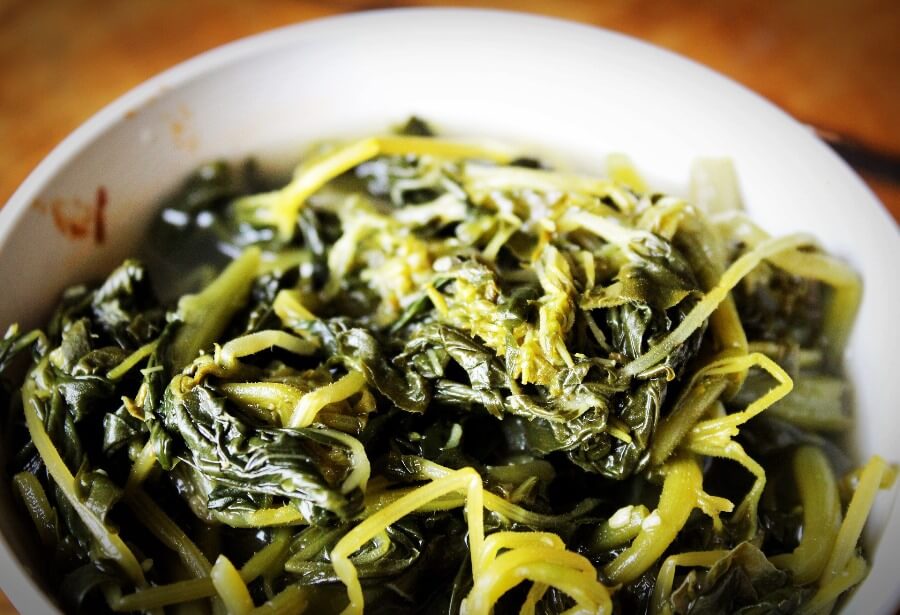
Pic by Danila from Travelling Dany
One of the most famous dishes we prepare in Naples for Christmas is the “minestra maritata” (“Married soup” in Neapolitan dialect). This soup takes quite a few days to prepare, because there are 8 different kinds of vegetables inside, and each has to get cooked separately, before they are put together with a pretty thick pork stock and boiled some more.
The name “maritata” (Married) describes the fact that all the ingredients mix perfectly together, creating a complex taste that is unlike anything else you can eat in Italy. This main course has ancient origins. The peasants used a lot of the pork meat they couldn’t sell, and so many vegetables from their own fields, for a soup that had to fill their belly and that had to be enough for the whole family.
In the narrow Via San Gregorio Armeno, also known as Christmas Alley in Naples, you can smell the scent of menesta maritata for days!
By Danila from Travelling Dany. Follow Danila on Facebook at Travelling Dany.
Related Post
16. Potica in Slovenia
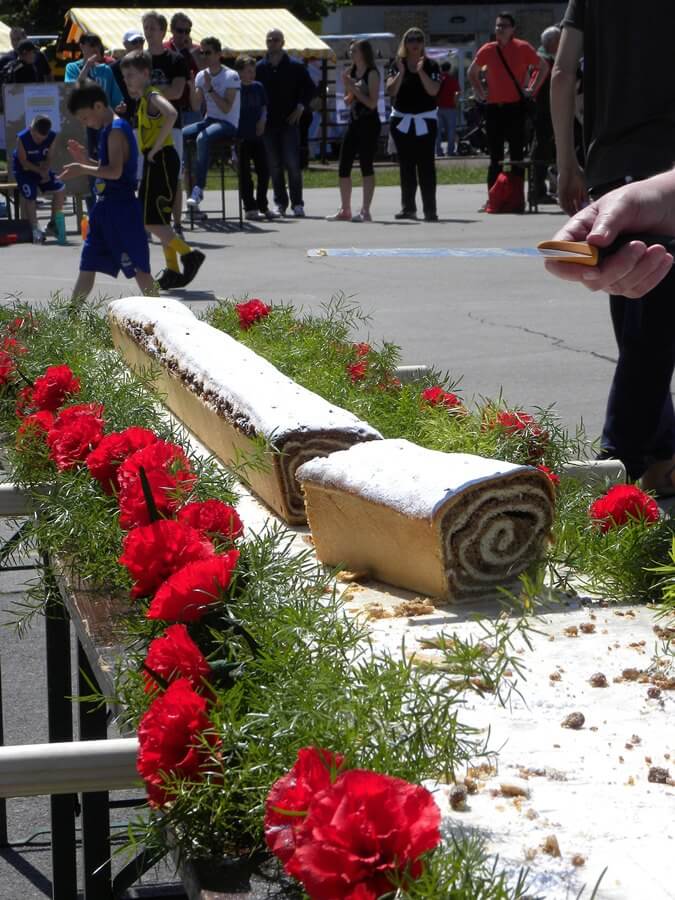
Potica Pic by Florijanov_sejem from Wikipedia CC BY-SA 3.0
My family is of Slovenian heritage, so every year my mom makes sure there is potica at our table! Potica, pronounced poh-TEET-sah (or /pəʊˈtiːtsə/ if you know your phonetic alphabet!) is a pastry loaf that’s served sliced. It’s made of a thin sheet of dough topped with ground, sweetened walnuts (the traditional filling), that’s then rolled into a log-shape and baked.
Modern twists on the traditional version have different fillings, like lemon, apple cinnamon, and strawberry, to name a few of my favorites. My family loves potica as much for its flavor as for the nostalgia it brings. My grandmother, a first-generation Slovene-American, used to make it by hand every holiday. Now that she’s moved on, we love keeping the tradition alive!
By Mary Beth from MB Sees. Follow Mary on Facebook at MB Sees.
17. Agnello allo spiedo in Italian / Sardinian
It’s not Christmas in Sardinia without a proper lamb roasted on a spit that slowly turns it around on the fire – because proper lamb has to be roasted on the fire, not in the oven! It’s a ritual that to many seems cruel, as the lamb eaten is really small. But it’s so eradicated in Sardinian culture that it’s not Christmas without it!
The preparation starts when the lamb is bought: proper Sardinian families will only consider buying the lamb from a local shepherd, and they usually reserve one before it’s even born! It has to be an animal that was born and bred in Sardinia, and chances are that it will be tiny.
Lamb is bought whole, cut in two halves that are then transfixed with a spit and placed on the fire, though not on the direct flame but on the hot coals. It cooks slowly, for at least one hour, until the skin is crispy and golden and most of the fat has slowly melted. Only salt is added in the cooking process.
Once ready, the lamb is taken off the fire and cut into portions. The most delicious part is that of the ribs, as the meat is soft, moist and salty.
By Claudia from My Adventures Across The World. Follow Claudia on Facebook at My Adventures Across The World.
18. Plum Pudding in Canada
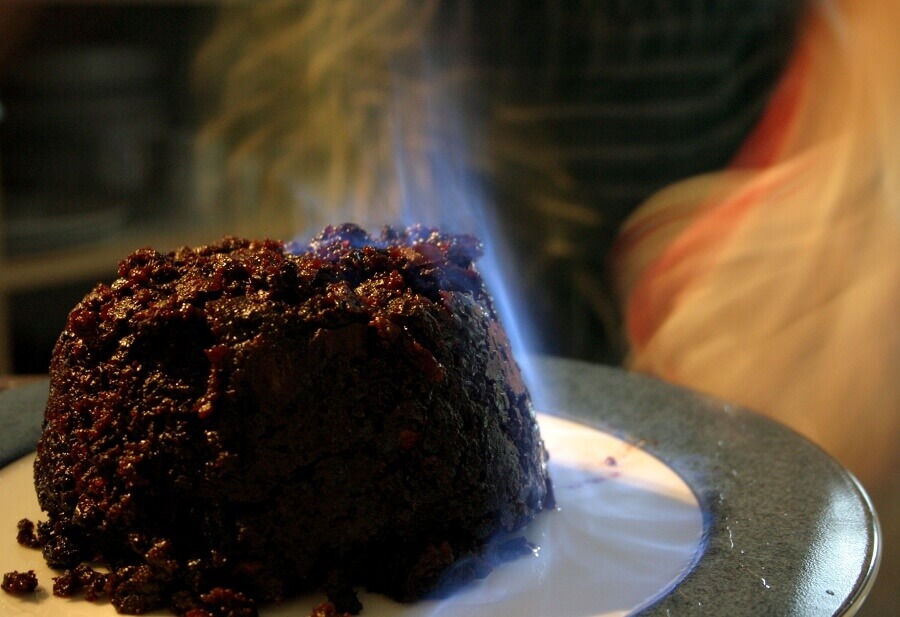
Pic by Matito from Wikimedia CC By SA
Plum Pudding, also known as Christmas pudding, is a cake like dish made during the holidays. The dessert originated in the UK with its roots from medieval England.
Despite the name containing plum, the pudding contains no actual plums due to the pre-Victorian use of the word plums as a term for raisins. Typically, the pudding is composed of dried fruits held together by eggs and suet, then flavoured with festive spices such as cinnamon, nutmeg, cloves, and ginger.
Through immigration it has been brought over to Canada, and is now a part of my families Christmas tradition in Newfoundland. The best part about Christmas Pudding is that it is traditionally served poured over with Brandy, which is then lit on fire. The cake is then brought out to a darkened dining room flaming. I always look forward to this festive desert every year!
By Lora from Explore With Lora. Follow Lora on Facebook at Explore With Lora.
19. BBQ seafood in Australia
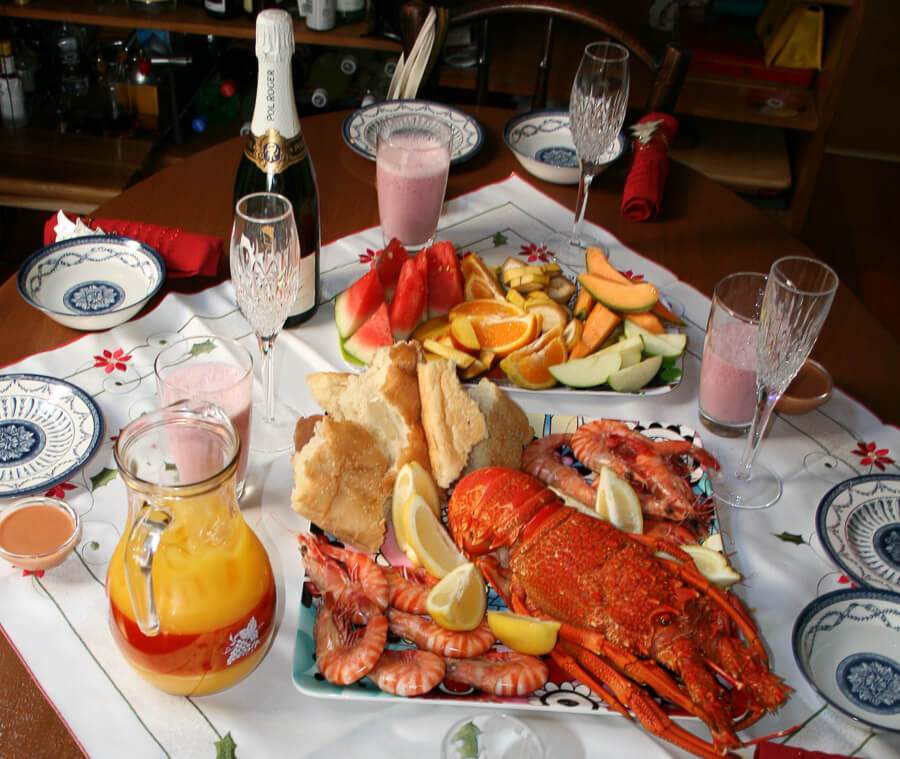
Pic by Alana from Family Bites Travel
In Australia, we celebrate the Christmas period during the heat of summer. So it is not surprising that most Aussies will opt for a BBQ seafood feast.
We are lucky in Australia to have sustainable fisheries practices. The Western Rock Lobster (Crayfish) industry in Western Australia, in particular, is known worldwide as the first of its kind to get certified as ecologically sustainable.
Our seafood is wanted all over the world. In fact, Australians get the leftover “small” crays, the big ones are exported to Asia. Not that is matters as the taste of our crays and prawns is heavenly.
In terms of Christmas seafood recipes, there is no need to get fancy. We simply BBQ the prawns. The crawfish is already cooked. We then serve it with a seafood sauce, some lemon wedges, and a warm finger bowl.
Sometimes we will bbq the crayfish with some lemon button. The seafood sauce is a mix of tomato sauce and mayonnaise. We also add a splash of Worcestershire and Tabasco sauce. Yum!
An Australia Christmas is simply not complete without barbequed seafood.
By Alana from Family Bites Travel. Follow Alana on Facebook at Family Bites Travel.
20. Traditional Christmas roast dinner in the UK
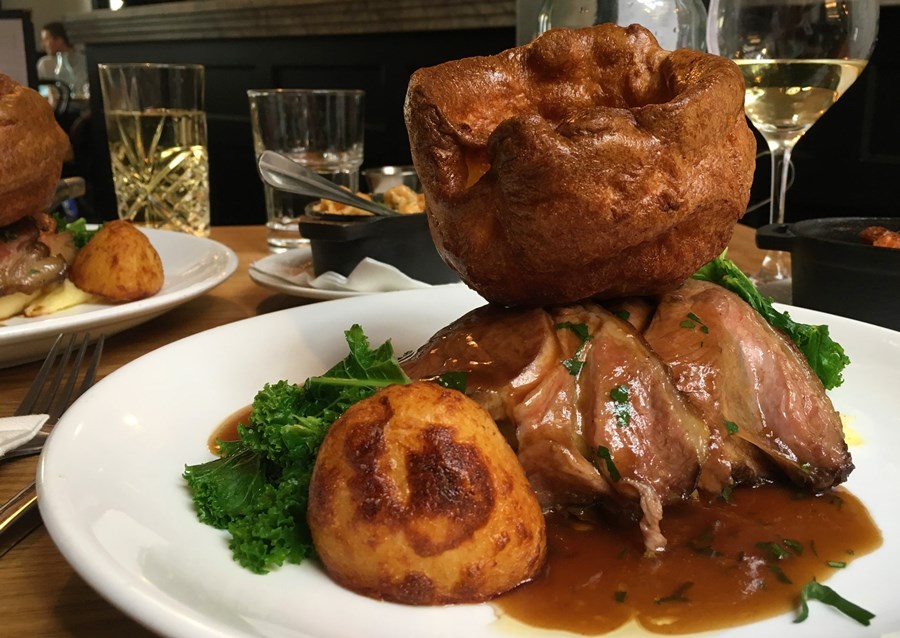
Pic by Kacie from The Rare Welsh Bit
On Christmas Day, there’s only one thing you’ll be eating if you’re based in the UK, and that’s a traditional Christmas roast dinner with all the trimmings.
It’s similar to the typical roast dinner eaten in British homes every Sunday, although at Christmas time, the dinner is often (although not always) served with turkey rather than chicken, beef, lamb or pork.
Alongside meat and poultry, the essential ingredients of a good roast dinner include golden roast potatoes, roast parsnips, carrots, swede, broccoli, cauliflower, peas and any other veg, but on Christmas Day, most families cook a bigger variety of side dishes and serve the dinner with extras, like pigs in blankets (mini chipolata sausages wrapped in bacon) and sausage meat stuffing.
After dinner, don’t be surprised if you find yourself falling asleep in front of the TV – this is just as much a part of the UK Christmas tradition as the food itself!
By Kacie from The Rare Welsh Bit. Follow Kacie on Facebook at The Rare Welsh Bit.
21. Bûche de Noël in France
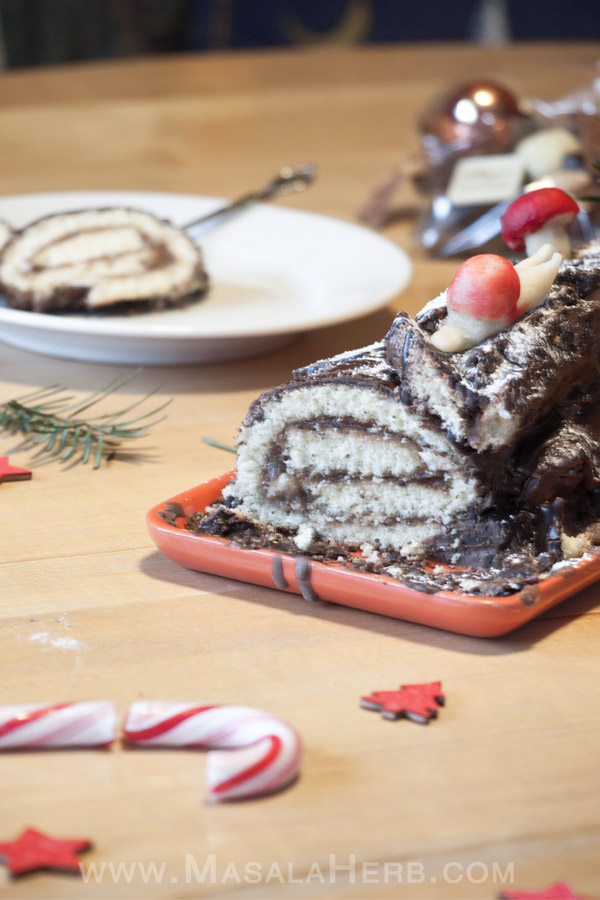
Pic by Helene from Masala Herb
Bûche de Noël is the french version of a Yule Log. The delicious dessert is a rolled in Roulade aka Swiss Roll which is decorated with marzipan, nougat and chocolate to make the cake look like a real wooden log.
The roll is stuffed with a chestnut paste or with a cream filling, depending on the region and family traditions in France and neighboring french-speaking countries. However, the yule log is also widely prepared during Christmas time in Scandinavian and neighboring Dutch and German-speaking regions.
The Bûche de Noël is unique because it doesn’t look like a cake from the outside. I love preparing my own Yule Log because it’s fun to decorate it to make it look like a real log or a cute log with mushrooms and snails. I’m a huge fan of the chestnut version and totally recommend that you make your own Yule Log this Christmas!
By Helene from Masala Herb. Follow Helene on Facebook at Masala Herb.
22. Stuffed chicken Roast in Mumbai
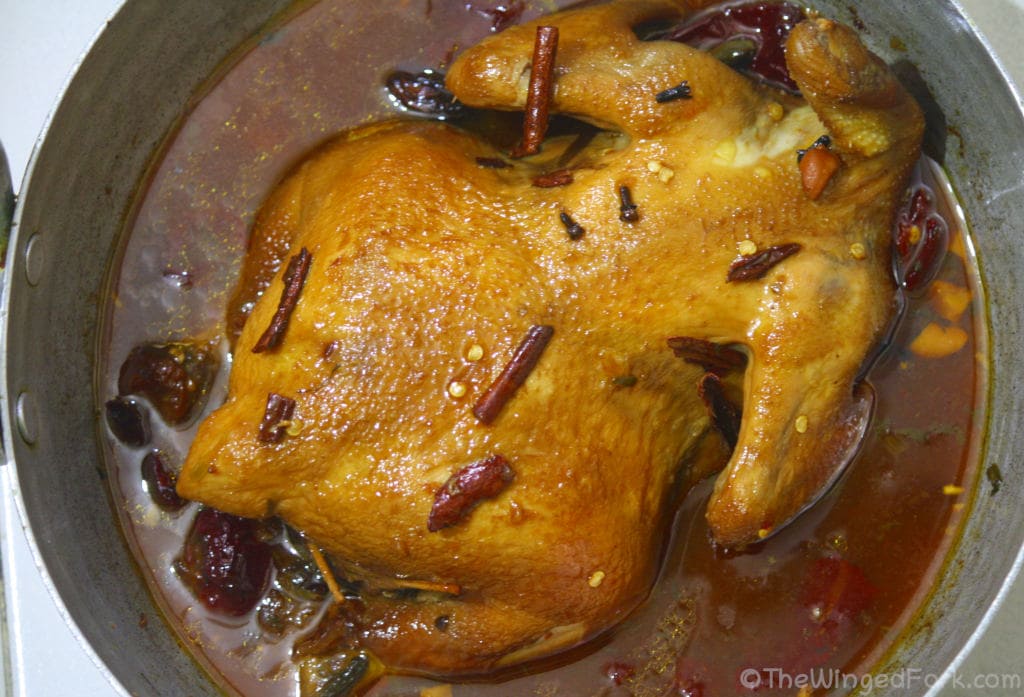
East Indians are the indigenous Christians from Mumbai. Like every other culture, our Christmas table is chock full of dishes. You have the sorpotel, vindaloo, tongue roast, fugiyas bread, wedding rice, and many more; and of course the must-have roast chicken with giblet stuffing.
A version of the traditional Sunday roast chicken, the stuffed chicken is also eaten as a meal for Christmas, with a delicious homemade liver stuffing. The glazed crispy chicken skin tastes as delicious as the juicy flesh, and the homemade stuffed chicken carves out just perfectly!
23. Christmas Pudding in United Kingdom and Ireland
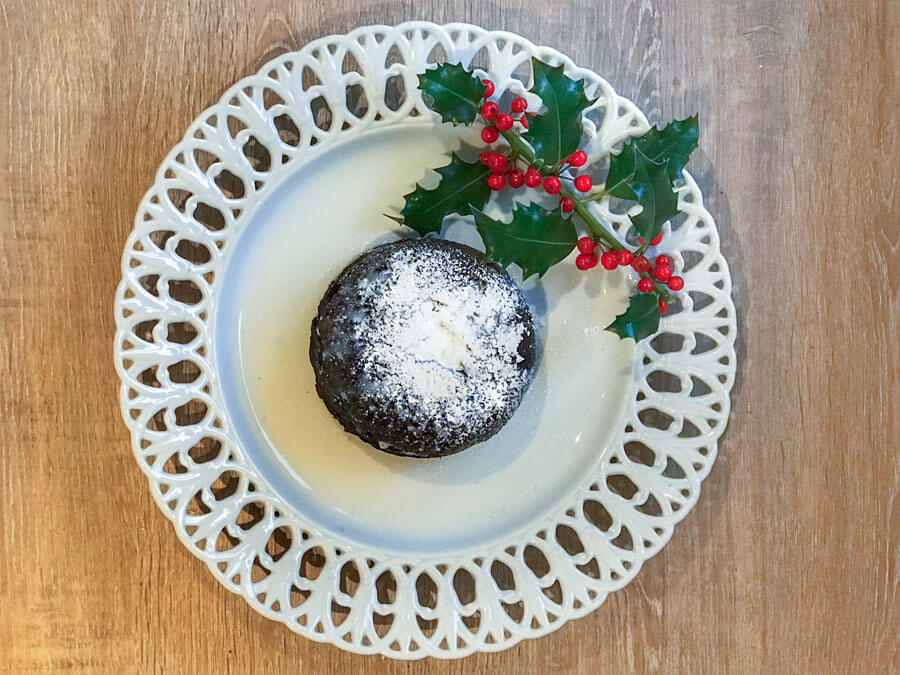
Pic by Clare from Epic Road Rides
Christmas pudding is a deliciously rich, dark, fruity concoction that’s made from dried fruit. The fruit is mixed together with egg and suet and flavoured with cinnamon, nutmeg, cloves and ginger. Our family’s recipe requires regular “feeding” of the Christmas pudding. This involves pouring liberal amounts of brandy over the pudding for at least a month before Christmas!
It’s also traditional in our household to light the Christmas pudding before serving it. Once the dish is ready to serve, this slightly dangerous additional requirement involves heating up extra brandy, pouring it over the pudding and then lighting the alcohol. The pudding is then presented to the waiting guests, with a sprig of holly on top of it and enveloped in a blue haze of flame.
Not only is it quite a spectacle, but the pudding tastes delicious too!
By Clare from Epic Road Rides. Follow Clare on Facebook at Epic Road Rides.
24. Stollen bread in Germany
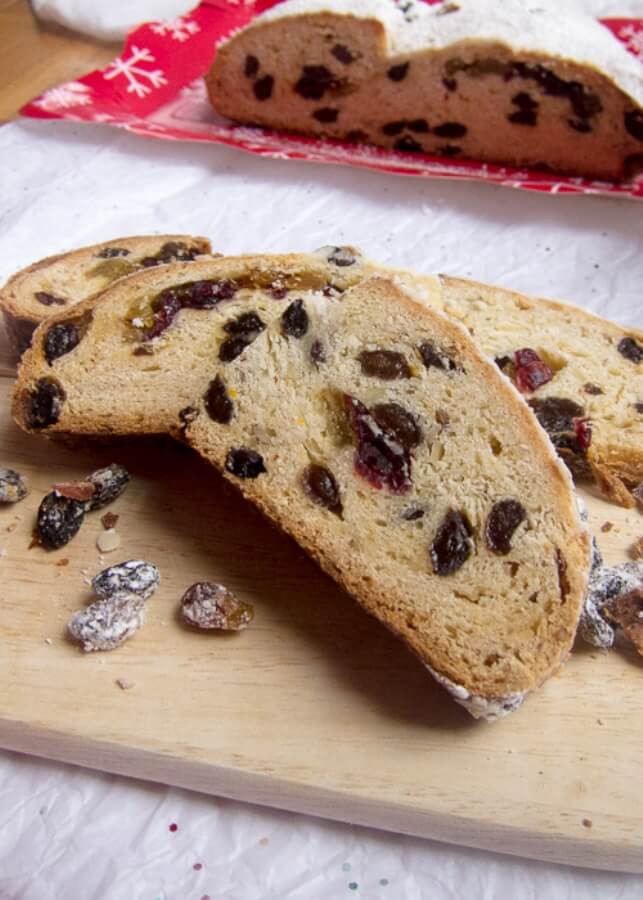
Pic by Cate from International Desserts Blog
When I think about Christmas in Germany, I immediately think of Stollen bread! Stollen is a sweet, buttery bread (not fruitcake!) that is first filled with raisins, currants, citrus zest, nuts, and Christmas spices, and then slathered in melted butter and powdered sugar.
Marzipanstollen includes a marzipan log in the middle; Butterstollen does not. Dresden is the birthplace of Stollen but you can find it everywhere in Germany during the Christmas season.
Pick up a fresh loaf at a bakery, order it online or make it at home from scratch. What’s unique about Stollen is the special way it’s rolled and shaped. As legend has it, Stollen is supposed to resemble a swaddled baby.
By Cate from International Desserts Blog. Follow Cate on Pinterest at International Desserts Blog.
Related Post
25. Gateau de Prieur in France
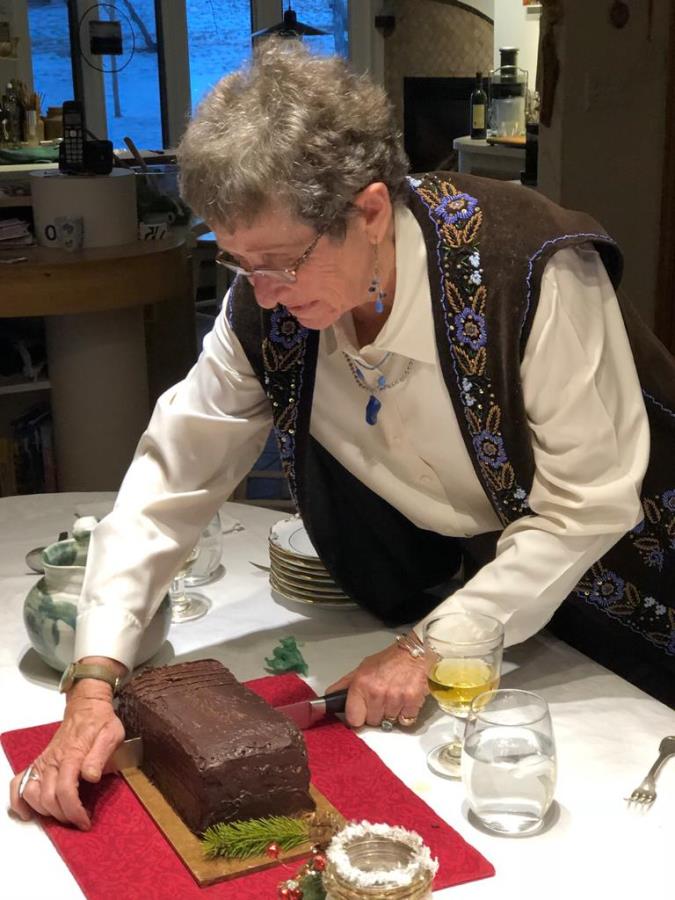
Pic by Chantal from Earth Nomads
My family makes a big deal of our traditional Christmas dessert. Gateau de Prieur truly is a labor of love. Days before the Holy Night, a dense chocolate cake is baked. It gets sliced in thin layers with help from an especially for this purpose-created cutting board.
A thin piece of wood is glued to the board to make sure every layer is identical. Next, buttercream glues the layers together. Coffee and chocolate buttercream alternate until the pieces of cake are all stacked on top of each other. Top it off with shiny rum-chocolate icing, and another year of Gateau de Prieur is in the books.
By Chantal from Earth Nomads. Follow Chantal on Facebook at Earth Nomads.
26. Ghapama in Armenia
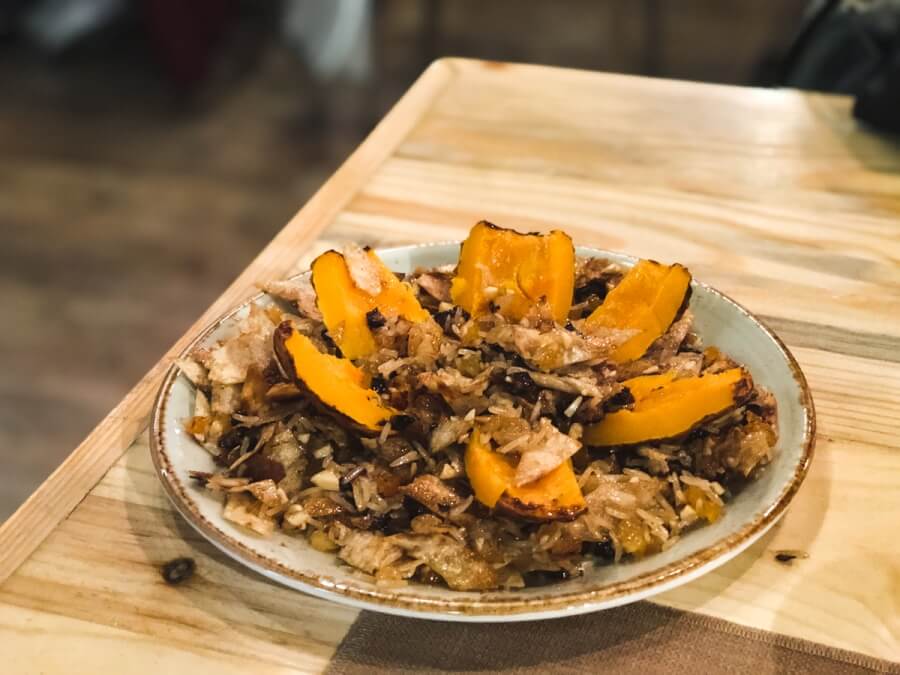
Pic by Megan from Megan Starr
Ghapama is a winter and Christmas dish in Armenia that is very popular and something that foreigners should try when visiting the country if they are visiting in the right season for it.
The dish consists of a pumpkin that is gutted and stuffed and cooked with rice, dried fruits, and nuts. It is quintessentially as Armenian as it gets and can also be served with honey or sugar to sweeten it.
Once it is brought to the table whole, someone will slice it open like a blossom for all to enjoy. You can find it at a few restaurants in Yerevan, like Lavash, and it is very delicious and hearty!
By Megan from Megan Starr. Follow Megan on Facebook at Megan Starr.
27. Crema de vie in Cuba
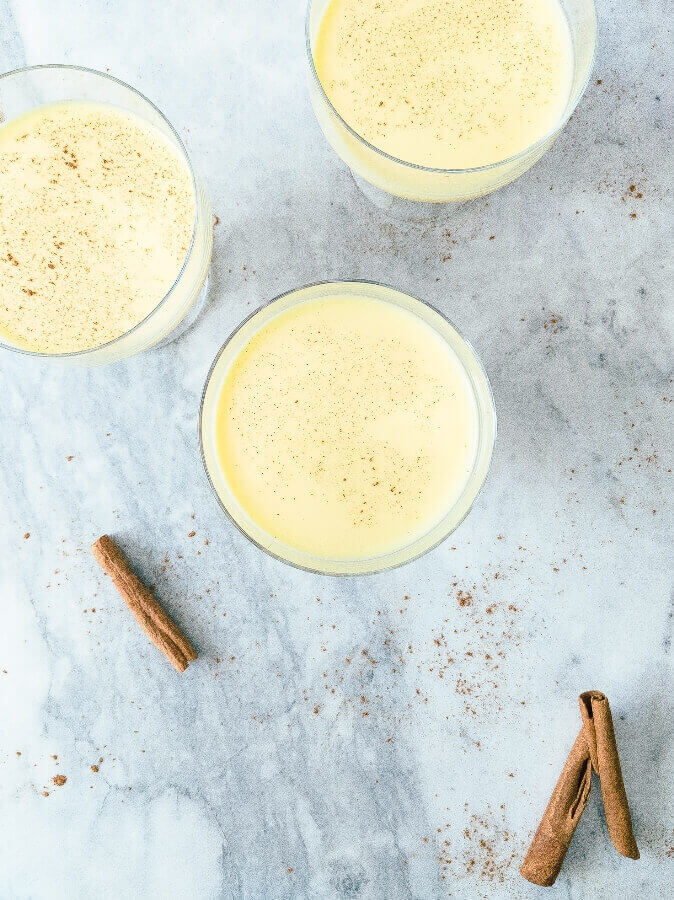
Pic by Ayngelina from Bacon is Magic
Crema de vie is a Cuban egg nog that has been around for centuries. It’s believed to have been brought over from the Spanish conquistadors who first had nog in England. As rum is plentiful in Cuba, it’s only natural that it was added to this festive drink.
In Cuba it is often made in glass bottles and brought to holiday festivities. Rather than being served in a large cup, it’s usually in a sherry glass or smaller stemmed glass as it’s quite rich.
The crema de vie recipe varies from family to family and while the traditional recipe in Cuba uses regular rum, it goes quite well with a bit of spiced rum. Just make sure not to have too much!
By Ayngelina from Bacon is Magic. Follow Ayngelina on Facebook at Bacon is Magic.
28. Watercolor Cookies in the US

Pic by Laura from Page & Plate
Every year growing up, my family decorated sugar cookies with all sorts of glitter, sprinkles, and sugars that inevitably ended up everywhere and resulted in vacuuming for days.
This year, I collaborated with my friend CJB Creations to create a new kind of tradition: watercolor cookies! A royal icing canvas makes it easy to paint on whatever designs you like using the easiest-to-make-paint ever: vodka and food coloring. Try it at home this holiday season, and get more information at Page & Plate!
By Laura from Page & Plate. Follow Laura on Facebook at Page & Plate.
Drooling right now! Aren’t these dishes lush? I have quite a few favorites in here. What about you? What’s your favorite Christmas meal or favorite Christmas time dessert?
Other Posts You’ll Love
- Which are the best Coffee Shops in The World
- Holiday in Rio de Janeiro
- Easy Christmas Gifts to Make at Home
- About the Swedish Kanelbullar
- African must-try foods
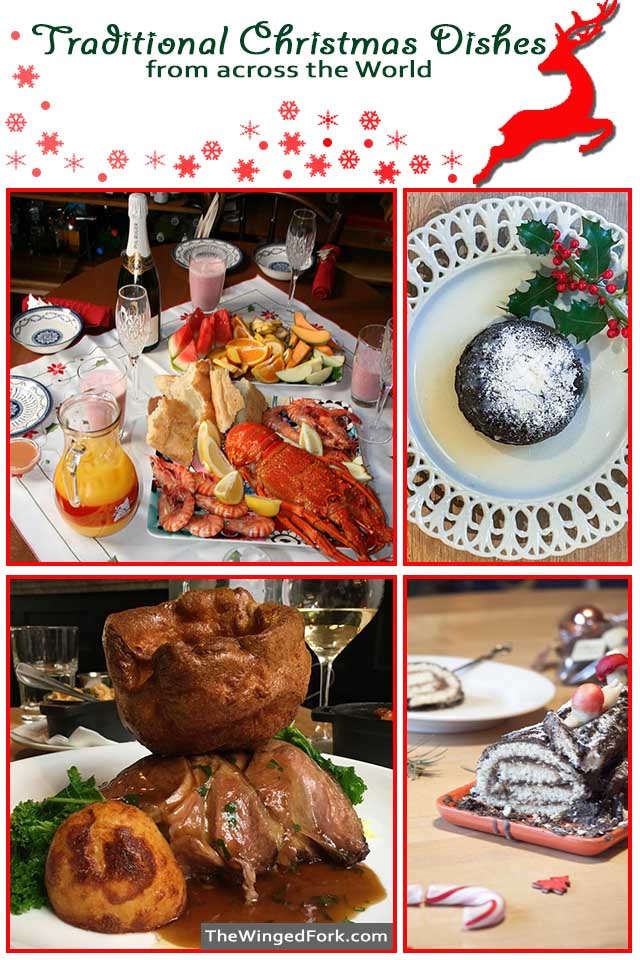

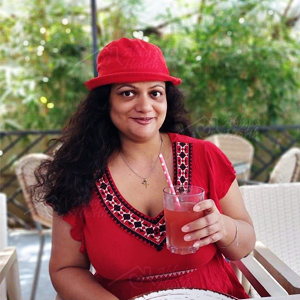
I’m an East Indian foodie and travel blogger from Bombay, India. I’ve travelled across parts of Europe and Asia, and love writing about my experiences with people and cultures. And naturally, I love food, wine, and travel, and have an endless bucket list of places to go to, and experiences I must blog about.
I also love baking and experimenting with food, with a little help from my family. If you must know, my favorite things are nice rainy days, the smell of cakes in the oven, playing in the snow, glasses of wine, and dark chocolate.
More info about me here!

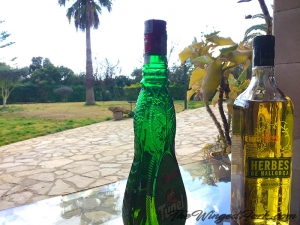
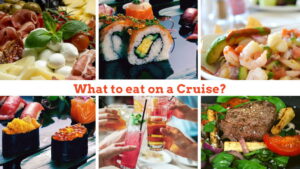
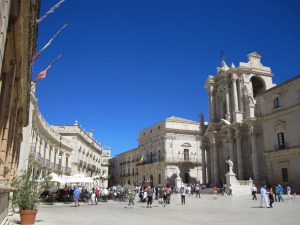

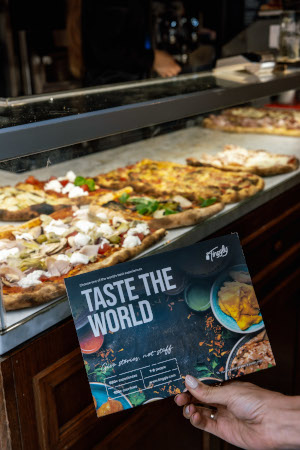
There are so many dishes here that make me want to travel in December, thanks so much for including me!